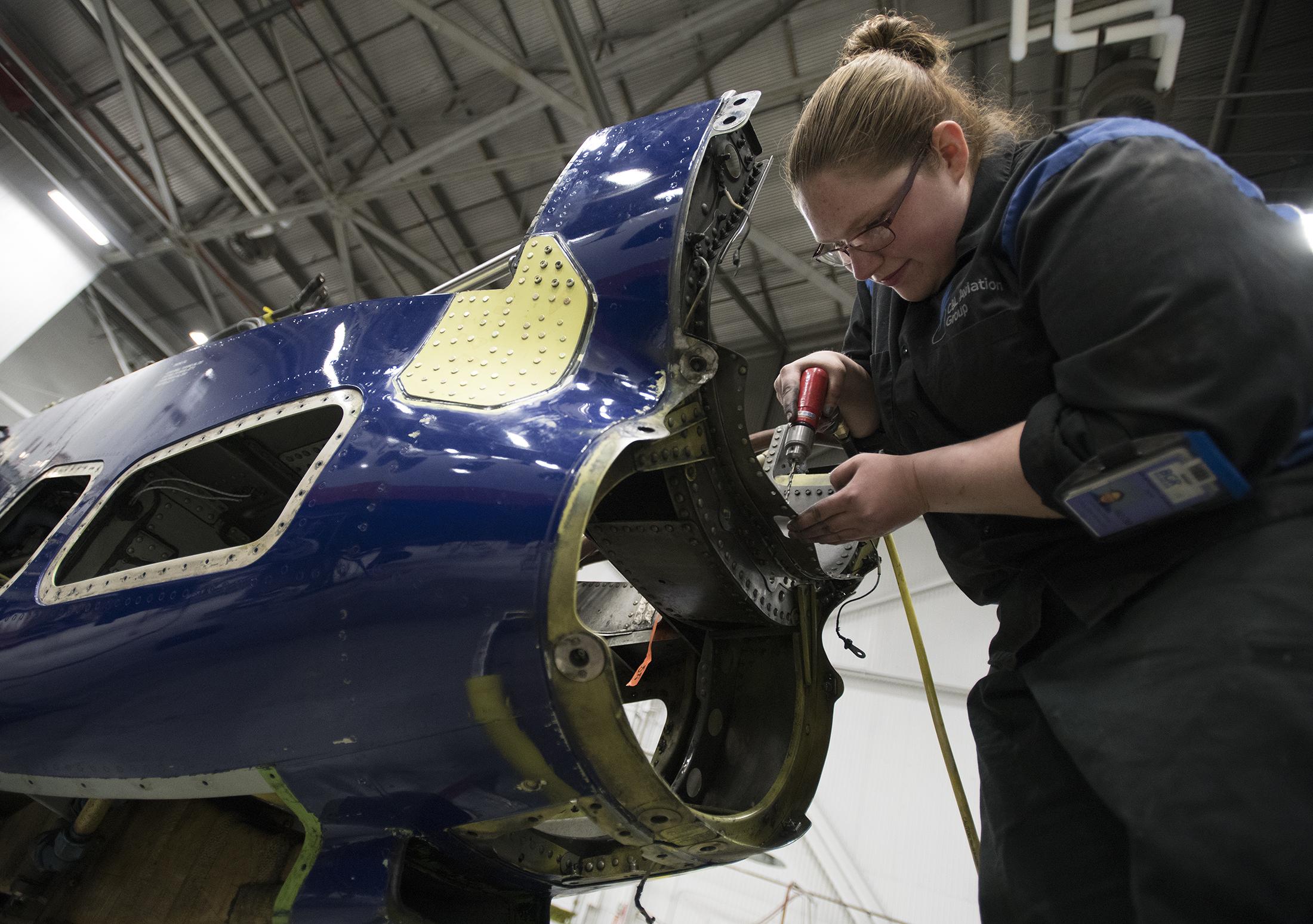Small U.S. Shops Rely On Diversification, Scrambling To Get Through Crisis

The virus crisis has been tough on all independent MROs. But large MROs often depend on large orders from large carriers, which can evaporate in a traffic downturn and are hard to replace.
Smaller MROs are vulnerable, but may have a more diverse customer base, and they don’t need to capture too much replacement work to keep people working.
Varied customers and energetic sales efforts can buffer a slump.
For example, C&L Aviation Services has been able to weather the virus crisis so far with only temporary layoffs and a lot of scrambling for new business, according to SVP Business Development MRO Calvin Tuitt.
The 250-person C&L does heavy maintenance, interiors, reconfigurations, painting and part sales. It traditionally did 85-90% of its work for regional aircraft, the remaining 10-15% in support of corporate planes. It is moving toward more corporate work.
Regional aircraft supported include Embraer 135s and 145s, CRJ100s through 900s, Dash 8s, Saab 340s and ATR 42s and 72s, which it paints for FedEx.
Tuitt says the crunch finally hit his MRO lines in August, but he is now seeing some signs of a pickup in work for November. Major airlines are replacing mainline jets with regional aircraft, which favors C&L.
The long-term trend is for major carriers to up-gauge their regional fleets, for example going from ERJ 135s to 175s or toward the larger CRJs. Tuitt thinks this freeing up of smaller regional aircraft might eventually create some opportunities for smaller, start-up carriers to pick up aircraft inexpensively.
The MRO has not received any government assistance and had to lay off 50-75 employees for a month in August. It has now brought these workers back.
Though based in North America, C&L serves an international market. C&L’s regular airline customers have been hit hard by the crisis. “We work hard to manage this with them,” Tuitt says.
But Tuitt has kept mechanics busy by looking for new business, at home and abroad, in “niche areas.” He declines to say which niches as he believes competitors might also seek to fill them.
Another small shop, Dallas Aeronautical Services, temporarily lost a few workers during the crisis, but is now hiring again, says sales manager Brian McPherson.
The MRO repairs components. “In our field it is basically damaged items or worn items that need repairs found during an inspection or upon damage . . . radomes, flight controls, inlets and cowlings are the big hitters,” McPherson explains.
The company supports these items for major airlines, regional airlines and general aviation. About 70% of work is for general aviation, and 30% is for airlines.
“Regional Airlines seem to be up and running, with the bigger commercial operators still in low-level operations,” McPherson explains. “GA shows signs of picking up, but operators are just flying and doing only required maintenance events, not spending on new interiors, avionics, and paint at this time.”
DAS supports Mesa Airlines, Skywest Airlines and Republic Airways. The DAS exec sees major carriers relying more on their regional subsidiaries during the traffic slump. “They have less people to carry, and it costs less per flight.”
General aviation is mostly seeking routine work, but McPherson hopes for an upturn before the end of the year.
One challenge in seeking work is that McPherson can’t travel to potential customer sites. “We have to sell over the phone,” he says.
On the other hand, a lot of MRO managers call DAS for repairs. “If you fly an aircraft, there’s a good chance of damage. Everything we get is broken.”
DAS had two employees catch the virus, one 26 and the other 34 years old. Both were simply sent home for 14 days.
DAS began 2020 with 90 employees, went down to 75 by mechanics leaving the company voluntarily, and now is back to 80 workers. “We are hiring,” McPherson stresses.





